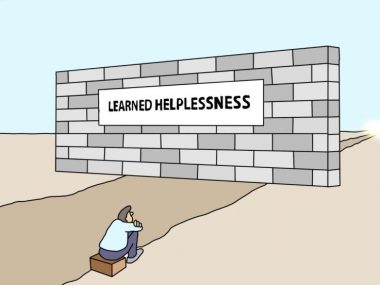I was minding my business when I overheard the production manager complaining to someone about the job currently in production, paper delivery arrived 3 hours late for a job that should have been delivered. Original problem was paper arrived late, now some problems are easy to fix, he said he simply got more people to help at ensuring the job is ready, they worked all night so that the delivery timeline can be met. Printing was done with the speed it required, so it was time to focus on finishing. Just thinking the problem was an easy one to fix was met with some rude production shock, this new problem is a monumental and tricky one; low humidity is contributing to the static problem which has caused the team to run the folding machine at a speed of 2000 sheets per hour as against the usual 15,000. I was more than optimistic that the customer will never understand, especially if it’s a simple job that has been previously printed, and at that time delivery was on time. Solving a problem can definitely lead to another, so two companies are doing well in complimentary businesses and both management decided to come together for a better repositioning, the merger and acquisition went smoothly with a clear understanding of what each company is bringing to the table, but six months down the line the newly formed company is still battling with a seemingly tiny problem like staff culture, a problem that cannot be changed in one day but was totally overlooked… The popular scientist, Sir Albert Einstein said and I quote “problems cannot be solved by the same level of thinking that created it”, this great problem solver was simply saying we need to constantly interrupt our thought pattern, and routine so we can always approach problems in different ways. My major challenge while repairing printing equipment stem from problems with seemly similar symptoms and one example readily comes to mind. The grip margin is out of tolerance is the problem description, in the first instance debris from the automatic plate punching unit dropped on the plate loading path, the plate moved this debris to the edge but has caused a shift in the normal loading position, while trying to strike, the operators complain that the margin isn’t correct. In the second case the clamp was replaced and a parameter was wrongly inputted. In both cases the operator will complain of incorrect grip margin right? Same symptoms but different problems. In this case the customer will always accuse me of dealing with a repeat error, my point is that customer’s never see the problems the way you see them, I have learnt to stop arguing that the circumstances are different, I JUST FIX THE PROBLEM and at the same time, EXPECT ANOTHER PROBLEM, strangely. This write up is to help create the most appropriate responses when solving problems.
1. Excellent problem solvers are not always the smartest or well educated ones but one that has learnt to deal with difficult and challenging moments. They REMAIN OPTIMISTIC 2. MANAGE YOUR EMOTIONS: Problems must be views realistically without emotions. A print shop can be likened to a pressure-cooker environment and it’s not out of place to get emotional when things go wrong, it’s hard to get emotions out of the way but it is essential to avoid distorted thinking that emotions allow when trying to logically fix a situation. A take away is for you to never magnify the problem. 3. CRITICAL REDEFINITION: What we have learnt is that a problem that appears simple might end up being a complex and extremely expensive problem to fix for instance a mere yellow line across a digital press might end up being a broken Laser diode assembly in the yellow channel. Our advice is always to REDEFINE a problem, break it down into parts and resolve each part, above all it’s only a problem that is well understood that can be resolved. 4. ESCALATE: We never know it all, I believe escalation helps free us from continually getting stuck in the box of industry-thinking and customary practices. Talking about thinking out of the box, many problems have been resolved after a sleep, a walk away period or in my case after receiving some fresh air when I go on a “spin” on my power bike. 5. BE COURAGEOUS: To be honest, no one likes facing unsolicited challenges, many times there are no other solution, so better to brace up and face the problem head on. Life has always set assumptions, a courageous problem solver will always challenge those assumptions. I would have thought that a 68-page book with a press run of 2,000 copies would have been ideal for a sheetfed press. After all, you can get a lot of 5.5” x 8.5” pages in a signature, and 2,000 copies is actually short run. So without thinking, I would have considered the job inappropriate for a web press due to its short print run. Then I would have been totally wrong. Apparently, a short-run, 64-page book (saddle stitched) or 80-page book (perfect bound) will exactly fit a printer’s web-fed equipment, even at such a short press run length. Expect to be ignorant from time to time. Don’t make assumptions. Ask questions, and learn. However, as a rule I never assume one printer’s equipment will be the same as another printer’s equipment. Solving problems in the printing business -and life in general- beats our experience hands down atimes. Experience they say is the best teacher and I agree because in most of our daily work experience keeps us from having to re-solve a problem every time it appears. That’s why experience has such immense value in business but think about it, the paradigm shift is that the experienced problem-solver gets the higher pay. So wouldn’t you rather be ready to solve problems? Thoughts from: Akin Oduwole (CE @ Technology Global)




